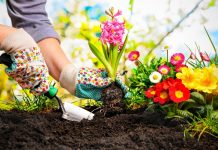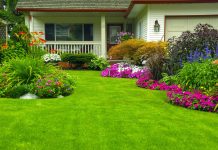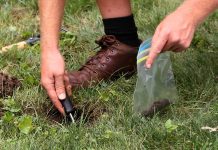Hay fever affects millions of people, and for gardeners it can be a real misery. But an allergy to pollen does not have to spell the end of your green-fingered days.
As demonstrated at the Chelsea Flower Show 2010, gardens can be hay fever-free zones. So how do you ensure you can continue to enjoy your outdoor space without getting hit by sniffles and sneezes? Lloydspharmacy has hay fever advice for gardeners so they can ensure their gardens continue to bloom.
Types of plants
Wind-pollinated plants and grasses cause the biggest problems. These have pollen that is spread on the breeze, so those with hay fever can easily breathe it in.

Insect-pollinated plants rely on bees and other creatures to transfer their pollen, so stick to these in your garden and minimise your symptoms. Irises, clematis, geranium and peonies are good choices, and closed-flower insect-pollinated flowers are better still, such as lavender. Daisy flowers such as gerbera, chrysanthemums and sunflowers should be avoided.
For trees, choose amelanchier or female trees of any species as they do not produce the pollen. Birch, oak and horse chestnuts are the biggest culprits in causing hay fever symptoms, so definitely do not plant these.
Avoid ornamental grasses as they produce the most allergenic sort of pollen.
Don’t mow the lawn
As grass pollen is the cause of most people’s hay fever mowing the grass can bring on quite severe symptoms. Avoid doing this task if you can and steer clear of the garden while someone else is mowing. If you live in a rural area or near a park you should also keep an eye on harvesting and upkeep schedules so you can avoid being nearby on those days. A picnic with the kids can easily be ruined if the council chooses that day to cut the grass.
Ideally, avoid large areas of grass and opt for plenty of paving, decking and plant beds instead.
Choose your gardening time wisely
Plants start to release pollen in the morning and continue throughout the day. This means pollen counts usually reach a peak by early evening. Get out early if you can and avoid being outdoors for too long in the late afternoon.
Breezy days can make symptoms worse as more pollen will be floating around in the air. But water will keep the pollen down so gardening just after a spring shower is ideal.
Check the pollen count each day and also keep a diary of when your symptoms are particularly bad so you can plan your gardening time carefully and make the most of every single minute outdoors.
Dress appropriately
Whenever you go out be sure to wear appropriate clothing. Wrap-around sunglasses and a hat are a must to keep pollen out of the hair and eyes. If you are particularly susceptible then wear a face mask too.
Brush yourself off before entering the house and put your gardening clothes straight in the washing machine so you do not bring pollen indoors. Once clean do not hang on the line to dry as they will just pick up pollen again!








